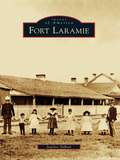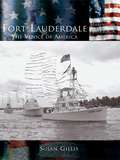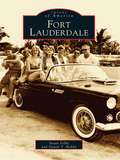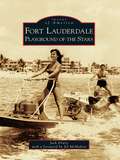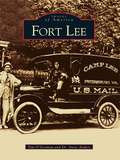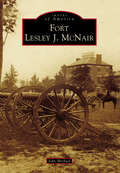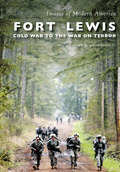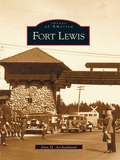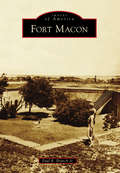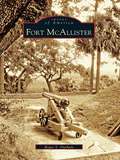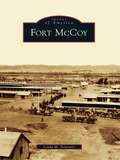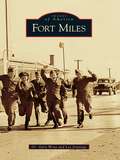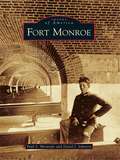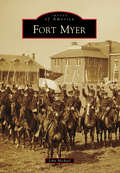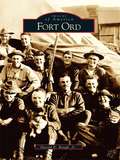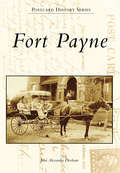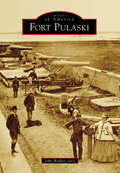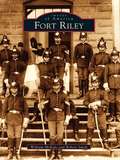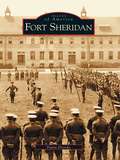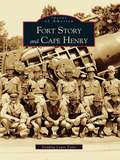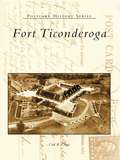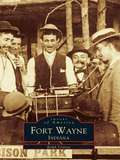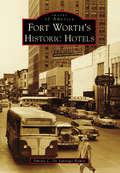- Table View
- List View
Fort Laramie
by Starley TalbottFort Laramie was one of the most important frontier outposts of the American West. Founded as the trading post Fort William in 1834, the fort became a U.S. military post in 1849. Beginning in 1841, emigrants stopped at Fort Laramie while traveling the Oregon, California, and Mormon Trails. Fort Laramie served as a gathering place for thousands of Native Americans and hosted the 1851 and 1868 treaty councils. When the treaties failed, the post became the staging area for campaigns that eventually led to the tribes's confinement on reservations. Fort Laramie was abandoned by the military in 1890; the buildings were auctioned and served private interests during the homestead period from 1890 to 1937. Fort Laramie was acquired by the state of Wyoming in 1937, and the fort became a unit of the National Park System in 1938. Fort Laramie National Historic Site is open daily except New Year's Day, Thanksgiving, and Christmas. The restoration of many structures to their historical appearance provides visitors with a glimpse of the past.
Fort Lauderdale: The Venice of America
by Susan GillisTaking its name from a fortification established more than 160 years ago during the Second Seminole War, Fort Lauderdale boasts a history stretching back 5,000 years before the first white settlers arrived in the eighteenth century. From beautiful tales of the "mysterious" New River that helped launch the community to more recent stories of rum running and gambling, segregation and integration, and boom and bust, the history of this Florida city is told here through the everyday lives of those who lived it.
Fort Lauderdale
by Susan Gillis Daniel T. HobbyLike many Sun Belt cities, Fort Lauderdale has experienced phenomenal growth over the past several decades. Once a wilderness home for the Seminole Indians and a few hardy pioneers, the small community grew up around Frank Stranahan's successful trading post, a convenient stop for hunters, fishermen, and sightseers preparing to head into the Everglades. But much more was in store for this rugged outback camp. Surveying Fort Lauderdale's fascinating history chronologically, this pictorial retrospective begins with the 1890s, a time when this part of the country was still part of America's frontier, isolated and wild. With the coming of the railroad and the twentieth century, an agricultural economy developed, and, soon, the Florida land boom would bring thousands of new settlers to the area. Fort Lauderdale's glistening beaches and comfortable climate earned the city anearly reputation as a tourist town and, eventually, as a Spring Break mecca.
Fort Lauderdale: Playground of the Stars
by Ed Mcmahon Jack DruryFew Southern cities have stronger claims to fame than Fort Lauderdale. As one of the great vacation destinations in America, over the years it attracted such celebrities as Bob Hope, Jayne Mansfield, Johnny Carson, Cary Grant, and the worldchampion New York Yankees. This beach townâ TMs history is starstudded and rich with interesting stories and photographs from that period.
Fort Lee (Images of America)
by Tim O’gorman Dr Steve AndersFort Lee, located adjacent to the Petersburg Civil War Battlefield, is the designated Home of the United States Army Quartermaster Corps. The first Camp Lee, established as a National Army Cantonment in 1917, trained the 80th Division for service in France. In 1940, Camp Lee was reestablished, and since World War II, has trained hundreds of thousands of Quartermasters, whose numerous skills include military supply, water and petroleum operations, Army field feeding, and parachute rigging for "supply by sky." Fort Lee is also the home of the Defense Commissary Agency and the Army Logistics Management College, which provides advanced schooling for Armed Forces logisticians. For over 60 years, Fort Lee has played a vital role ensuring that America's Army is the best-equipped and most well-supported army in the world.
Fort Lesley J. McNair (Images of America)
by John MichaelFrom southeast Washington, DC, where the Potomac and Anacostia Rivers meet, this fort has continued to protect America's capital. In 1791, Pierre L'Enfant designated it as a military reservation. The post is the third oldest in continuous operation--as an arsenal, a penitentiary, a hospital, and now, a military education center. It was renamed in 1948 to honor Lt. Gen. Lesley J. McNair, who was killed in World War II. Over the course of two centuries, the fort has born witness to the British ransacking during the War of 1812; a Civil War explosion that killed female arsenal workers; and the incarceration, trial, and hanging of Lincoln assassination conspirators. Over time, it became the home of several artillery commands, the first federal penitentiary, the US Army Engineer School, the US Army Music School, the US Army War College, and the US Army Band ("Pershing's Own"). Today, it has evolved into the National Defense University, Inter-American Defense College, and the headquarters of the Military District of Washington.
Fort Lewis: Cold War to the War on Terror (Images of Modern America)
by Alan H. ArchambaultCamp Lewis was established in 1917 as a training camp for the US Army in World War I. Made a permanent post in 1927, Fort Lewis became an important base for training and sending soldiers to combat in World War II and the Korean War. In 1956, the 4th Infantry Division arrived at Fort Lewis while America was deeply committed to protecting democracy around the world during the Cold War. From that time forward, Fort Lewis has been in the forefront of military reservations in the United States. The post played a crucial role in the Vietnam War, Operations Desert Shield and Desert Storm, and the War on Terror. Soldiers based at Fort Lewis have deployed to conflicts throughout the world in defense of freedom. Today, Fort Lewis remains on the cutting edge of America's sword.
Fort Lewis: Cold War To The War On Terror (Images of America)
by Alan H. ArchambaultThe area now known as Fort Lewis was first recognized for its potential as a military reservation in the early 1900s when a series of militia and national guard encampments were held in the area. Camp Lewis was established as the United States entered World War I in 1917 and became the first Army installation in the history of the nation to be created as a direct result of the outright gift of land by private citizens. During World War I, Camp Lewis became the largest military post of the era. Here, thousands of "doughboys" trained for the Great War and began a tradition of training excellence that continues to this day. In 1927, the camp was designated a permanent post and offically became Fort Lewis.The story of this important military installation is told here in a series of historic photographs, from the collections of Fort Lewis Military Museum dating from the early 20th century to the present. The photographs capture not only the natural beauty of the area and prominent buildings, but also many of the men and women who have served their nation at Fort Lewis.
Fort Macon
by Paul R. BranchSilently standing guard on the eastern point of Bogue Banks overlooking the entrance to Beaufort Harbor, Fort Macon is the centerpiece of one of the most visited North Carolina State Parks. Since Fort Macon State Park was established in 1924, it has been a familiar destination for millions of visitors to the "Crystal Coast" of Carteret County, North Carolina. The old historic fort itself, standing today in venerable repose, harkens back to another time in our country's history, however. At different times throughout its long, storied past, the fort has served as a US Army garrison post, a stronghold occupied for defense in three different wars, the scene of a desperate battle, a prison, and finally the second oldest state park in North Carolina. Fort Macon showcases this unique coastal fortification through historic images, highlighting not only its military past, but its role as a popular tourism destination through the years.
Fort McAllister: Fort Mcallister, Georgia, In The Civil War And Beyond (Images of America)
by Roger S. DurhamMany earthen fortifications defended the city of Savannah and its numerous water approaches after the Civil War broke out. One of these defenses, Fort McAllister, protected the entrance to the Ogeechee River and the strategic railroad and highway bridges upstream. From November 1862 to March 1863 the U.S. Navy bombarded the fort seven different times without success. The fort finally fell to General Sherman in December 1864; ironically, the final threat the fort faced was not from an enemy trying to get up the river, but from one trying to get down the river to the sea. In the 1920s auto magnate Henry Ford renovated the fort and focused new attention on its history.
Fort McCoy (Images of America)
by Linda M. FournierFrom the days of the horse-drawn caisson to today's Humvee, Fort McCoy has played a vital role in the military readiness of America's armed forces. The only federal military installation within the state of Wisconsin, Fort McCoy has seen more than five million military personnel from throughout the UnitedStates pass through its gates since its founding in 1909. Fort McCoy exists today primarily because its founder, Maj. Gen. Robert B. McCoy, foresaw that the U.S. Army would need a regional site at which to train and maneuver and then dedicated himself to making that vision a reality. Fort McCoy's mission ofsupporting training and mobilization has remained constant from those early days on the McCoy ranch to the current global War on Terror. This book chronicles the illustrious history of Fort McCoy from the doughboys of World War I to today's soldiers supporting Operations Enduring Freedom and Iraqi Freedom.
Fort Miles (Images of America)
by Lee Jennings Dr Gary WrayFort Miles is in Cape Henlopen State Park near historic Lewes and the site of Delaware's first Dutch settlement. Named for Gen. Nelson Appleton Miles, this powerful seacoast fortification was built during World War II to defend the vital industries of the Delaware Valley. Included in this volume are rare vintage photographs of the fort's heavy artillery, hundreds of 3,000-pound sea mines, and radar systems that searched the nearby ocean for the enemy surface fleet. Its powerful 12- and 16-inch guns could reach out between 15 and 25 miles to attack an adversary. Today, the fort is being reborn as one of the best World War II museums in the country; it is housed in a real World War II bunker and includes the barracks complex and fire control towers.
Fort Monroe (Images of America)
by David Jeffrey Johnson Paul MorandoFort Monroe was once a powerful symbol of America's national defense system. From 1823 to 1945, its primary military mission was to protect Hampton Roads and the entrance to the Chesapeake Bay from enemy attacks. Over the years, as military technology advanced, Fort Monroe's defensive posture changed. To counter potential threats, American coastal defense installations such as Fort Monroe developed sophisticated steel disappearing guns, mortars, anti-aircraft weapons, and submarine mines. As the site of the army's Coast Artillery School, Fort Monroe trained thousands of soldiers. After World War II, Fort Monroe's role as a coastal defense installation ended, and the post took on new missions as a training headquarters facility. With more than 200 original photographs, this volume unveils the layered history of this massive stone-and-brick installation from the end of the Civil War to the present. This volume will highlight more than 140 years of images that capture Fort Monroe's varied missions, historic buildings, the families who lived there, the resort hotels, and other aspects of this unique national landmark.
Fort Myer (Images of America)
by John MichaelOverlooking Washington, DC, Fort Myer holds a commanding view of America's capital. Built in 1863 from the Custis-Lee estate, one of 70 defensive Civil War fortifications of the capital, this historic US Army post was known as Fort Whipple. As the war ended and reconciliation began, only this fort remained and was later renamed to honor the US Army's first signal officer, Brig. Gen. Albert J. Myer. These acres of Arlington Heights are distinguished by unique events, including the beginnings of military aviation, the Army Cavalry showcase, "The Three Sisters," and the National Weather Bureau. During World War I, Army officers trained here to fight "Over there," and today two units call Fort Myer home: the Army Band ("Pershing's Own," since 1942) and the 3rd Infantry ("The Old Guard," since 1948). Photographs and text present the evolution of this national landmark in its first 100 years, including its buildings, people, and events.
Fort Ord (Images of America)
by Harold E. Raugh Jr.From its establishment during World War I to its closure at the end of the Cold War, the Army installation best known as Fort Ord made a significant contribution to our national defense. Founded as a training area for Presidio of Monterey troops in 1917, Fort Ord covered more than 28,000 acres near the city of Monterey in its heyday. The local topography made it ideal as an infantry training center, and this was its primary mission throughout much of the 20th century. Most recently, Fort Ord was home to the 7th Infantry Division (Light), which was inactivated in 1993. In September 1994, Fort Ord closed its gates and became a part of military history.
Fort Payne (Postcard History)
by John Alexander Dersham Collins KirbyFort Payne was named for the US Army stockade at the Native American village of Willstown, where Cherokee scholar Sequoyah developed his famous alphabet in the 1820s. Following the Cherokee Removal of 1838, known as the Trail of Tears, a farming settlement developed around the stockade site, and the arrival of the Wills Valley Railroad in the 1850s helped shape its early growth. The small town became the county seat in 1878 and quickly boomed into a coal and iron industrial powerhouse filled with the municipal infrastructure, stately structures, and elegant residences that define the city today. By mid-century, Fort Payne was experiencing its second boom and was ultimately recognized as the "Sock Capital of the World."
Fort Pulaski (Images of America)
by John Walker GussForts are a lasting tribute to the prominence of the US military, and Fort Pulaski stands among these magnificent fortresses. Overlooking the mouth of the Savannah River and the Atlantic Ocean, Fort Pulaski is named in honor of Gen. Casimir Pulaski, Revolutionary War hero and father of the US Cavalry, which endured some of the most damaging artillery combat in early American warfare. In addition to its unfortunate notoriety for serving as the first fort where a rifled cannon was successfully tested in combat against masonry forts, it played a part in other significant events, including a baseball game during the Civil War where one of the first photographs of the sport was taken with the newly invented camera. Ultimately, the fort was considered important enough to be preserved and designated a national monument.
Fort Riley (Images of America)
by Robert Smith William MckaleFounded in 1853, Fort Riley was established to protect merchants and settlers on the Santa Fe and Oregon-California Trails. Fort Riley kept the peace during the Civil War and in 1893, a cavalry school began operation there. Fort Riley continued to train mounted troops during the Golden Age of Cavalry after World War I, but also served as a training site for more than 150,000 troops during the first and second World Wars. This collection of vintage images commemorating the sesquicentennial of Fort Riley is a colorful, patriotic reminder of the military post that has served the nation continuously since its founding 150 years ago.
Fort Sheridan
by Diana DretskeAmid Chicago's North Shore communities is a national landmark--the former U.S. Army Base at Fort Sheridan (1887-1993). Fort Sheridan was created out of the civil and labor unrest following the Chicago Fire of 1871, the great Railway Strike of 1877, and the Haymarket Riot of 1886. These events produced an atmosphere of insecurity, prompting Chicago's wealthiest businessmen--North Shore residents and members of the Commercial Club of Chicago--to levy their influence with the federal government in establishing an army presence in their backyards. Fort Sheridan is a place rich in the traditions of the U.S. cavalry and artillery, of training camps, and the Women's Army Corps. This illustrated history explores the many aspects of Fort Sheridan and takes the reader on a journey through military life.
Fort Sheridan (Then and Now)
by Laura TuckerFort Sheridan is a national historic treasure nestled along the shores of Lake Michigan. It was established as an army base in 1887 and decommissioned in 1993, giving way to its rebirth as a township and forest preserve. Laura Tucker, a six-year resident, avid photographer, and Fort Sheridan enthusiast, has researched and compiled a collection of photographs and facts that highlight the ever-changing uses of the structures and the chameleon-like personality of the fort.
Fort Story and Cape Henry (Images of America)
by Fielding Lewis TylerOn April 26, 1607, the English colonists anchored at the entrance to the Chesapeake Bay and came ashore to the historic piece of land they named Cape Henry. Then, in 1917, a military post was established and fortified to protect the southern portion of the entrance to the Chesapeake Bay during World War I; it was named Fort Story. Expanded and heavily fortified to meet the demands of the Second World War, the post served as a principal installation for the Harbor Defenses of Chesapeake Bay. The big guns fell silent after that conflict, and the post became the "Home ofArmy Amphibians" with over-the-beach operations. Today Fort Story continues to provide a superb training installation for the Army Transportation Corps and Special Operations.
Fort Ticonderoga (Postcard History Series)
by Carl R. CregoCalled "the Key to the Continent" and "the Gibraltar of the North," Fort Ticonderoga controlled the strategically critical portage between Lakes George and Champlain in the eighteenth century and played an important role in both the French and Indian War and the American Revolution. French troops began construction of the fort in 1755, calling it Fort Carillon. The British captured the fort in 1759 and renamed it Fort Ticonderoga. The storming of the fort on May 10, 1775, by Benedict Arnold, Ethan Allen, and the Green Mountain Boys was America's first victory of the Revolutionary War.
Fort Wayne, Indiana
by Ralph VioletteIn 1895, Fort Wayne officially celebrated the centennial of the construction of a Fort at the Three Rivers by General Anthony Wayne in 1794. For the belated birthday, Fort Wayne's streets were festooned with flags and bunting. Centennial archeswere erected throughout the city, and many events filled the week-long celebration. This photographic essay examines the century since the centennial. It outlines Fort Wayne's development in the twentieth century and conveys a picture of the city at the end of the century. The significance of the rivers in Fort Wayne's development is explored. A chapter on Calhoun Street focuses on the changes the twentieth century has produced in the downtown area. Changes in residential patterns, transportation, and leisure-time activities are emphasized.
Fort Worth's Historic Hotels (Images of America)
by Simone C. De Santiago RamosFort Worth, originally named Camp Worth, was founded as an Army outpost in 1849, and the old cavalry stables became Fort Worth's first hotel. The Texas & Pacific Railroad arrived in Fort Worth in July 1876, bringing the need for more lodging. Shortly after its arrival, boardinghouses and simple accommodations were quickly opened. At the turn of the century, Fort Worth became a center for cattle ranchers, and the first luxury hotels were built. By the next decade, wealthy oil barons replaced the cattle ranchers, and the demand for larger and more elaborate hotels was established. Many of these first hotels were replaced with motor lodges and smaller chain hotels after the growth of the automobile industry; however, a few are still in operation today.
Fortunately
by Remy CharlipGood and bad luck accompany Ned from New York to Florida on his way to a surprise party. Images and image descriptions available.
